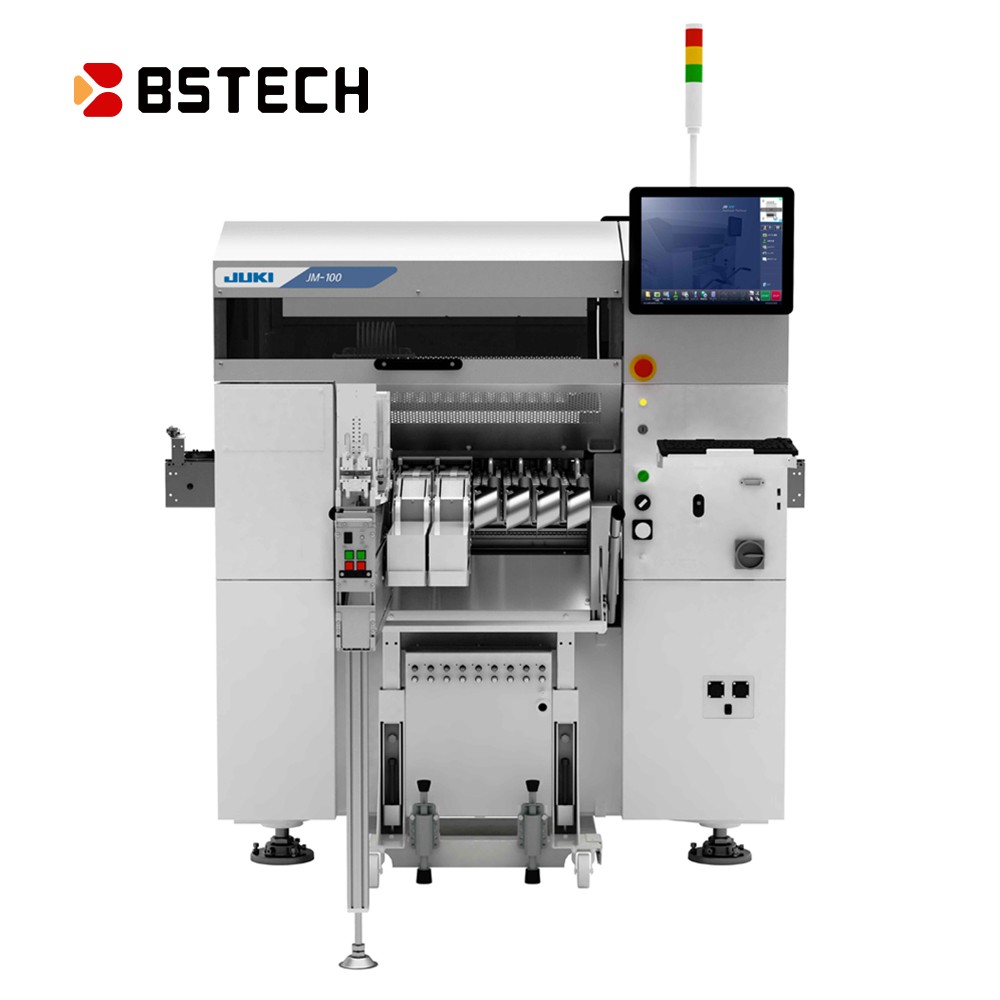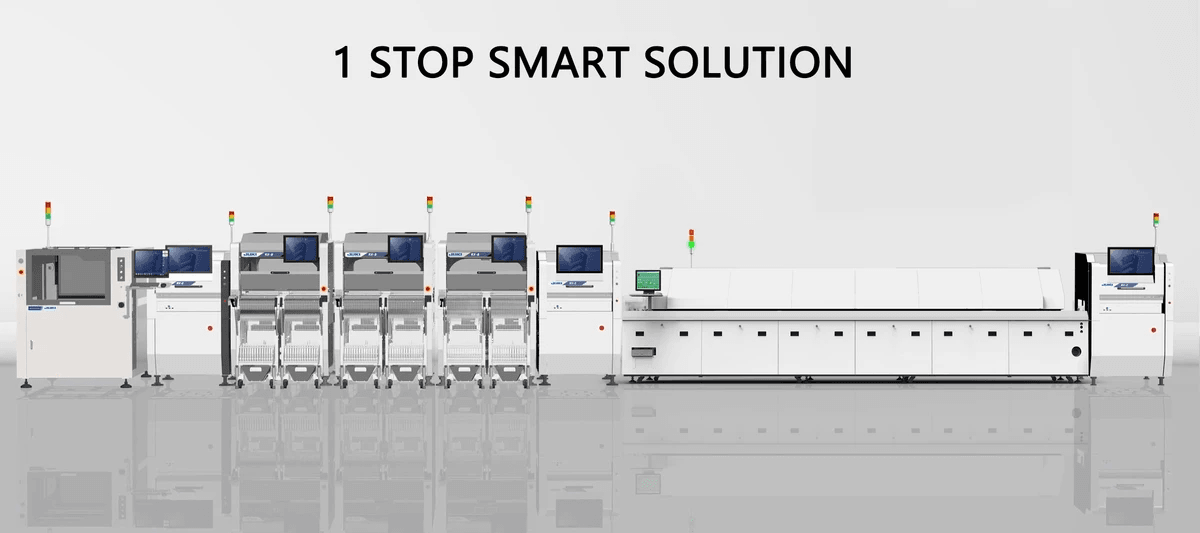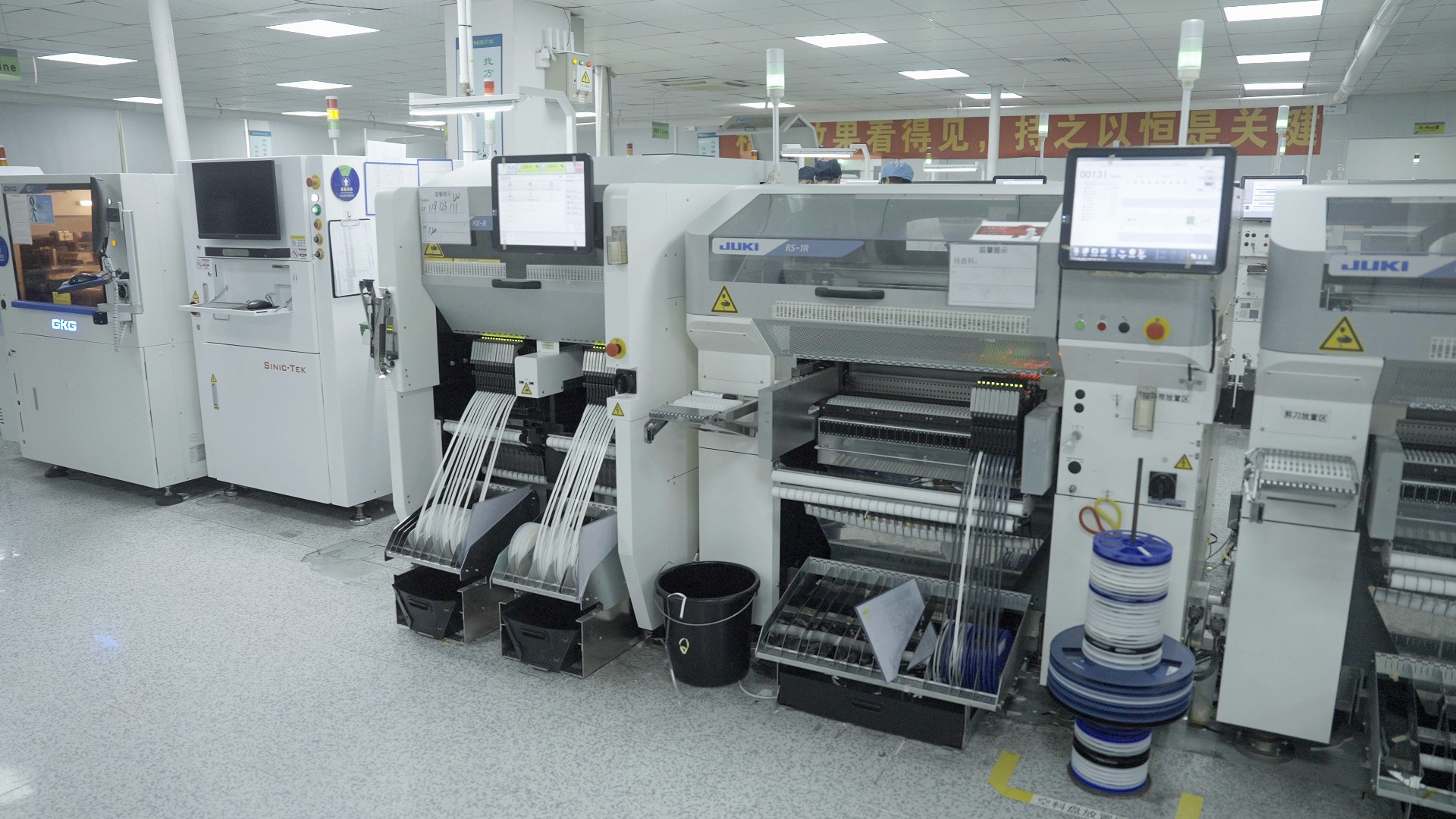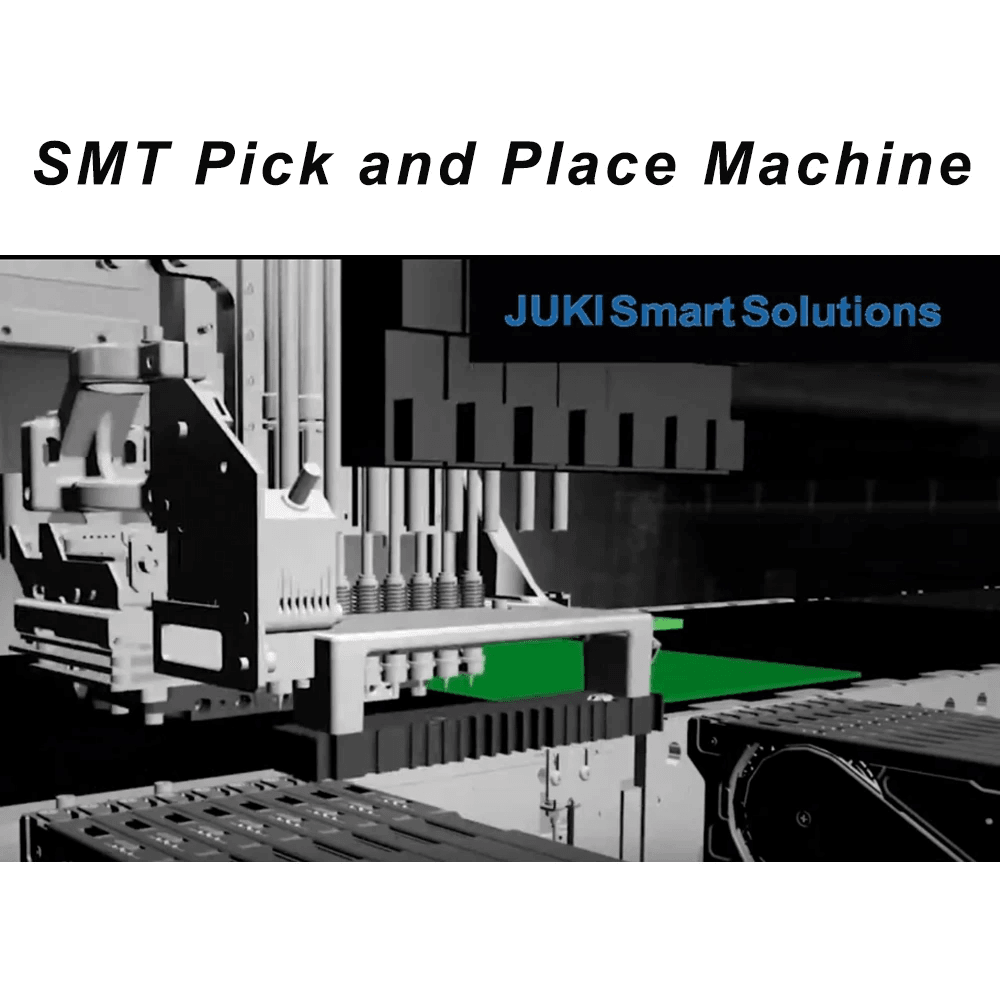Introduction

In the world of electronics manufacturing, understanding SMT technology is crucial for anyone involved in production processes. The SMT placement machine plays a vital role in assembling printed circuit boards (PCBs) efficiently and accurately. With the rapid advancements in technology, it’s essential to grasp the basics of these machines to make informed decisions.
Understanding SMT Technology Basics
Surface Mount Technology (SMT) has revolutionized how electronic components are assembled on PCBs, allowing for smaller and more efficient designs. At the heart of this process is the pick and place machine, which automates the placement of SMT components onto boards with precision and speed. Familiarizing yourself with these fundamentals will help you appreciate why investing in a quality machine is so important.
The Importance of Choosing Wisely
Choosing the right SMT machine can significantly impact your production efficiency and overall product quality. A poorly selected pick & place machine may lead to increased downtime, higher operational costs, and ultimately affect your bottom line. Therefore, making an informed choice is essential to ensure that your investment aligns with your production goals.
Key Features to Look For
When evaluating potential SMT machines, certain features should be at the forefront of your decision-making process. Look for capabilities like advanced vision systems that enhance accuracy during component placement and versatile nozzle types that can handle various sizes of SMT components effectively. Additionally, consider factors such as speed, flexibility, and ease of maintenance—these can make or break your experience with any machine pick and place equipment.
What is an SMT Placement Machine?

In the world of electronics manufacturing, the SMT placement machine plays a crucial role in assembling printed circuit boards (PCBs). These machines are designed to efficiently place surface mount technology (SMT) components onto PCBs with precision and speed. Understanding their purpose and functionality can help businesses optimize their production processes.
Definition and Purpose
An SMT placement machine, often known as a pick and place machine, is specifically engineered to automate the process of placing small electronic components onto PCBs. The primary purpose of this machine is to enhance assembly efficiency while ensuring high accuracy in component placement. By utilizing advanced technologies, such as vision systems and robotic arms, these machines facilitate quick and reliable production runs, minimizing human error.
Common Types of SMT Machines
There are several common types of SMT machines available on the market today, each designed to cater to different production needs. From high-speed pick & place machines that handle large volumes to more compact models suited for smaller batches or prototypes, there's a perfect fit for every manufacturer. Additionally, some SMT machines are specialized for specific tasks like soldering or inspection, providing a comprehensive solution for various stages in PCB assembly.
The Role of Pick and Place Machines
The pick and place machine is at the heart of any efficient SMT line; its role cannot be understated. This machine not only picks up components from feeders but also accurately places them onto designated spots on the PCB using precise movements guided by sophisticated software algorithms. In essence, without an effective pick & place machine in your arsenal, achieving optimal production speed and quality would be significantly hampered.
Core Components of a Pick & Place Machine

Understanding the core components of a pick and place machine is essential for optimizing your SMT production line. These machines are designed to handle various SMT components with precision and speed, making their internal mechanisms crucial to their performance. By examining the vision systems, nozzle types, and efficient handling methods, you can ensure that your machine pick and place operations run smoothly.
Vision Systems Explained
Vision systems in an SMT placement machine serve as the eyes of the operation, enabling precise alignment and placement of components on printed circuit boards (PCBs). These systems utilize high-resolution cameras to capture images of both the PCB and the SMT component before placement, ensuring accuracy down to microns. By employing advanced algorithms, these vision systems can identify component orientation and detect any misalignments or defects in real time, significantly reducing errors during production.
The integration of sophisticated vision technology in modern smt machines enhances overall efficiency by minimizing waste and rework costs associated with faulty placements. Furthermore, these systems can be programmed to recognize different types of smt components based on size or shape, allowing for versatility across various projects. In essence, a reliable vision system is fundamental for any efficient pick & place machine setup.
Nozzle Types and Their Importance
Nozzles play a pivotal role in the functionality of pick & place machines; they are responsible for gripping and transferring smt components onto PCBs with utmost care. Different nozzle types cater to various component sizes and shapes—from small chip resistors to larger integrated circuits—ensuring that each part is handled appropriately without damage. The choice of nozzle not only affects placement accuracy but also influences cycle times; selecting the right type can dramatically boost your production speed.
Additionally, some nozzles come equipped with features like vacuum control or pneumatic actuation that enhance their gripping capabilities. This adaptability ensures that even delicate smt components are securely held during transport without risk of dropping or misplacing them on the PCB. Ultimately, understanding nozzle specifications will empower you to fine-tune your machine's performance according to specific production needs.
Handling SMT Components Efficiently
Efficient handling of SMT components is crucial for maintaining high throughput rates in any smt machine environment. Pick & place machines often incorporate advanced feeders that automate component supply directly into the assembly line—this reduces manual handling errors while increasing overall productivity levels. By utilizing automated solutions such as vibratory feeders or tape-and-reel systems, manufacturers can ensure a seamless flow of materials throughout their production process.
Moreover, proper organization within the workspace contributes significantly to efficiency; arranging smt components logically minimizes downtime spent searching for parts during assembly runs. Implementing best practices around component storage—like using clear labeling or color-coded bins—can streamline operations further while enhancing worker safety on-site. Thus, investing time into optimizing how you handle SMT components pays off handsomely in terms of efficiency gains across your entire operation.
Evaluating Your Production Needs

When it comes to selecting the right SMT placement machine for your production line, understanding your specific needs is paramount. The choice of a pick and place machine can significantly impact your efficiency and output quality. Therefore, a thorough evaluation of your production requirements will help ensure that you invest wisely in an SMT machine that meets both current and future demands.
Assessing Volume and Speed Requirements
The first step in evaluating your production needs is to assess the volume and speed requirements for your assembly line. Different SMT machines are designed to handle varying levels of throughput, so understanding how many units you need to produce per hour or day is essential. If you're ramping up production or planning for seasonal spikes, consider investing in a faster pick & place machine that can adapt to these changes without sacrificing quality.
Moreover, it's important to factor in the complexity of the SMT components you'll be working with. More intricate designs may require higher precision from your machine pick and place capabilities, which could influence the type of SMT placement machine you choose. By aligning your volume expectations with speed capabilities, you can avoid bottlenecks that could hinder overall productivity.
Space Considerations for SMT Machines
Space is often at a premium in manufacturing environments, so when choosing an SMT machine, make sure you consider its footprint carefully. Different models come with varying dimensions; some compact machines are designed specifically for smaller workspaces while still delivering robust performance as an effective pick and place machine. Before making any purchase decisions, measure available space accurately to ensure that the selected machine smt fits comfortably into your workflow without causing disruptions.
Additionally, think about how easy it will be to access the SMT component storage areas as well as maintenance points on the equipment itself. A well-placed pick & place machine can streamline operations by reducing unnecessary movements during assembly processes while allowing easy access for operators and technicians alike. This not only enhances productivity but also promotes a safer working environment.
Future-Proofing Your Investment
Investing in an SMT placement machine isn't just about meeting immediate needs; it's also about planning for future growth and technological advancements. As industries evolve rapidly due to innovations like automation and smart manufacturing practices, selecting a versatile pick and place machine that can adapt over time becomes increasingly crucial. Look for features such as modular designs or upgradeable software options that allow you to enhance capabilities without needing a complete overhaul down the line.
Moreover, consider potential expansions in product lines or new markets when evaluating different smt machines available on the market today. Choosing a flexible solution ensures that you're not left high and dry if demand shifts or new technologies emerge—after all, no one wants their investment becoming obsolete too soon! By thinking ahead now, you can save yourself headaches (and expenses) later on.
Top SMT Machines on the Market

When it comes to selecting an SMT placement machine, the options can be overwhelming. With advancements in technology and varying production needs, choosing the right pick and place machine is crucial for optimizing efficiency and quality. In this section, we will explore Bensun Technology’s offerings, compare popular brands, and highlight innovative features in modern SMT machines.
Bensun Technology’s Offerings
Bensun Technology has carved a niche in the market with its robust and reliable SMT machines designed for various production scales. Their flagship models of pick & place machines are equipped with advanced vision systems that ensure precise placement of components, enhancing overall productivity. Additionally, Bensun offers customizable solutions that cater to specific manufacturing requirements, making their smt placement machine a favorite among many professionals.
The versatility of Bensun's machines means they can handle a wide array of smt components efficiently—ranging from small chips to larger connectors without compromising on speed or accuracy. Their commitment to innovation is evident in their user-friendly interfaces and integrated software solutions that streamline operations. With a focus on customer satisfaction and technical support, investing in a Bensun machine is like having a partner in your production journey.
Comparing Popular Brands
While Bensun Technology stands out, it's essential to consider other popular brands in the market as well when evaluating an SMT machine purchase. Companies like Yamaha and Juki also offer high-performance pick and place machines that boast impressive speed and precision capabilities. Each brand has its unique strengths—Yamaha focuses on compact designs ideal for limited spaces while Juki emphasizes high-volume production efficiency.
When comparing these brands, it’s vital to assess not only the specifications but also after-sales support services they provide; this can significantly impact your operational success with any smt machine you choose. User reviews often highlight factors such as ease of use, reliability over time, and availability of spare parts—all critical elements when deciding which pick & place machine is right for your production line. Ultimately, understanding these nuances will help you make an informed choice tailored to your specific needs.
Innovative Features in Modern SMT Machines
The landscape of SMT technology is continually evolving with innovative features designed to enhance performance levels across various applications. Modern pick & place machines now come equipped with advanced AI-driven vision systems that enable real-time adjustments during operation—an absolute game-changer for maintaining precision even at high speeds! These enhancements allow operators to optimize processes while reducing waste associated with misalignment or incorrect placements.
Another remarkable feature seen in contemporary smt placement machines includes modular designs that facilitate easy upgrades as technology advances or production demands change over time. This adaptability ensures longevity for your investment while keeping pace with industry trends without needing complete replacements every few years! Furthermore, energy-efficient models are becoming increasingly common—helping manufacturers reduce operational costs while remaining environmentally conscious.
Tips for Maintenance and Support

Maintaining your SMT placement machine is crucial to ensure optimal performance and longevity. Regular upkeep not only helps in avoiding unexpected breakdowns but also maximizes the efficiency of your pick and place machine. By following a structured maintenance routine, you can keep your SMT machines running smoothly, making sure that every smt component is handled with precision.
Regular Maintenance Practices
To keep your pick & place machine in top shape, establish a regular maintenance schedule that includes cleaning, calibration, and inspection. Dust and debris can accumulate quickly on SMT machines, affecting their performance; thus, routine cleaning is essential. Additionally, ensure that all moving parts are lubricated according to the manufacturer's guidelines to prevent wear and tear over time.
Calibration is another vital aspect of regular maintenance for any machine pick and place system. Periodically checking the alignment of components ensures that your SMT placement machine operates accurately without misplacing any smt component during production runs. This proactive approach will not only enhance productivity but also reduce costly errors in assembly.
Troubleshooting Common Issues
Even with diligent maintenance practices, issues may arise with your SMT machines from time to time. Common problems include misalignment of components or failure of the vision system to recognize certain smt components correctly. When these issues occur, it's important to have a systematic troubleshooting process in place.
Start by reviewing error messages displayed by the pick & place machine; they often provide clues regarding what might be wrong. If you notice persistent misalignment issues, recalibrating the nozzles may resolve the problem effectively. For vision system failures, check camera settings or clean lenses to ensure they’re free from obstructions that could hinder performance.
Finding Reliable Support Services
When it comes to support services for your SMT placement machine, finding a reliable partner can make all the difference in minimizing downtime during repairs or servicing needs. Look for service providers who specialize in SMT machines and have a solid reputation within the industry for prompt responses and effective solutions. Online reviews and testimonials can provide insights into their reliability and expertise.
Additionally, consider whether they offer training sessions on troubleshooting basic issues with pick & place machines; this can empower your team to handle minor problems independently without needing immediate external assistance. Having access to spare parts from trusted suppliers ensures quick repairs when necessary—keeping your production line moving efficiently without prolonged interruptions.
Conclusion

In wrapping up our exploration of SMT technology, it's crucial to remember the key considerations that can make or break your production line. Choosing the right SMT placement machine is not just about picking one off a shelf; it's about understanding your specific needs, from speed and volume to space constraints. The right pick and place machine will not only enhance efficiency but also ensure that your operations are future-ready.
Recap of Key Considerations
When evaluating an SMT machine, consider its core components, such as vision systems and nozzle types, which significantly impact performance. Additionally, think about how well the machine can handle various SMT components—this versatility can save you time and money in the long run. Lastly, don’t forget to assess your production needs carefully; a machine pick and place that fits today’s requirements may need adjustments for tomorrow’s innovations.
Making the Right Choice
Making the right choice in selecting an SMT placement machine involves balancing features with practicality. While it might be tempting to go for the flashiest model on the market, consider what aligns best with your operational goals and budget constraints. Remember, a well-chosen pick & place machine is an investment that pays dividends in productivity and efficiency over time.
Next Steps for Your SMT Journey
Now that you're equipped with knowledge about smt machines and their functionalities, it’s time to take action! Start by conducting a thorough assessment of your current production processes to pinpoint areas for improvement. Afterward, reach out to suppliers like Bensun Technology or explore other brands to find a suitable pick and place machine that meets your unique needs.
